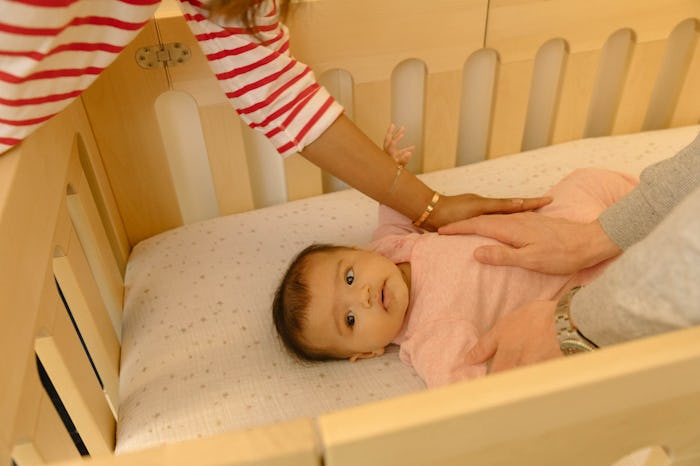Life
Here's How Warm Your Baby's Room Can Be Before It Gets Dangerous
Whether your little one has been a great sleeper from the start or wakes every hour, there are many external factors that affect the quality of their sleep and their safety while snoozing. Temperature is one aspect of your baby's sleep environment that shouldn't be ignored, because even if you think it's safe, the temperature might not be right for your little one. Learning how hot a nursery can be, especially in the toasty summer months, is vital information for every new parent.
According to the Baby Sleep Site, overheating your baby while they're sleeping increases their risk of Sudden Infant Death Syndrome (SIDS). Although there are other factors that contribute to SIDS risk — like stomach sleeping, cigarette exposure, or using loose blankets — the Sleep Foundation noted that overheating due to room temperature, blankets, or pajamas greatly increases the risk.
So what's a parent to do with this sobering information? Knowing the ideal temperature for baby's room isn't rocket science, and luckily, it's pretty easy to tell if the room is too hot. According to What to Expect, baby's room should be a comfortable temperature for an adult. This usually falls between 68 to 72 degrees Fahrenheit, regardless of the season or temperature outside. If you feel too warm in the room, it's likely too warm for your baby. Similarly, if you feel like you need to put on another layer to stay warm, it may be too chilly.
It's also important to consider the clothes your baby is wearing to sleep as well as any swaddles or blankets that will contribute to their overall body temperature. If your little one is wearing thicker, warm pajamas, consider turning the heat down a bit to compensate. Similarly, if they're wearing thin pajamas, add a swaddle or turn the heat up to the warmer end of the safe spectrum.
The aforementioned What to Expect article suggested touching the nape of your baby's neck to check their temperature. If it feels hot or sticky, they're too hot and need fewer layers or a cooler temperature.
As your baby gets older, their risk of SIDS goes down, but paying attention to their room temperature is still important to ensure a safe, restful night's sleep.
